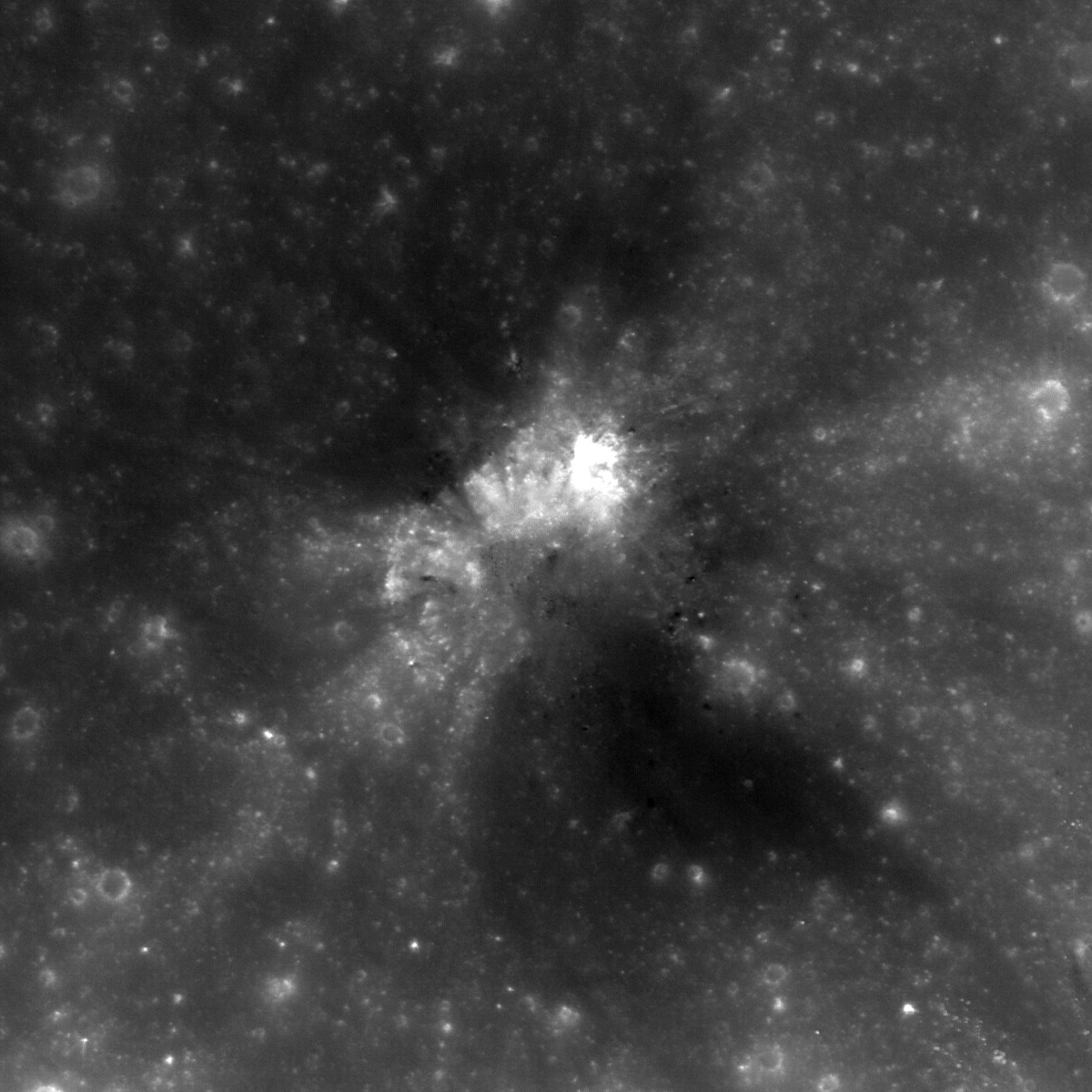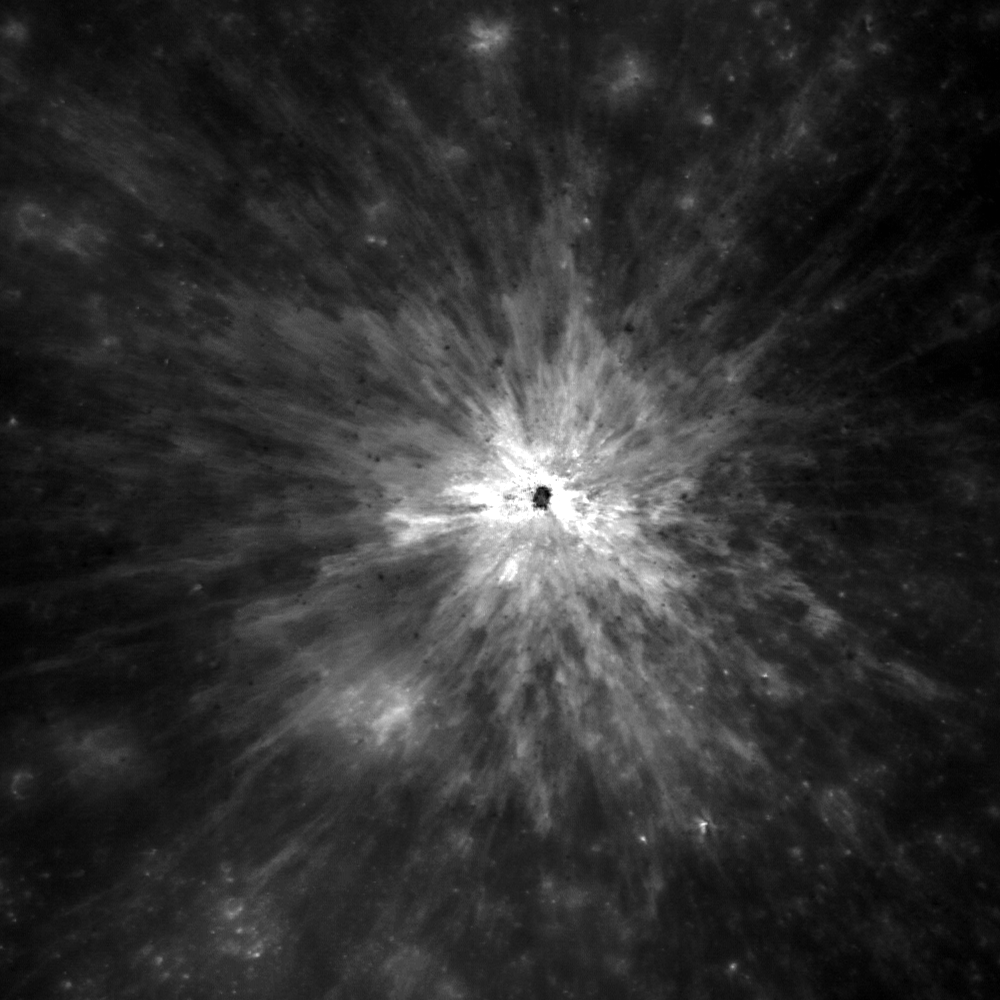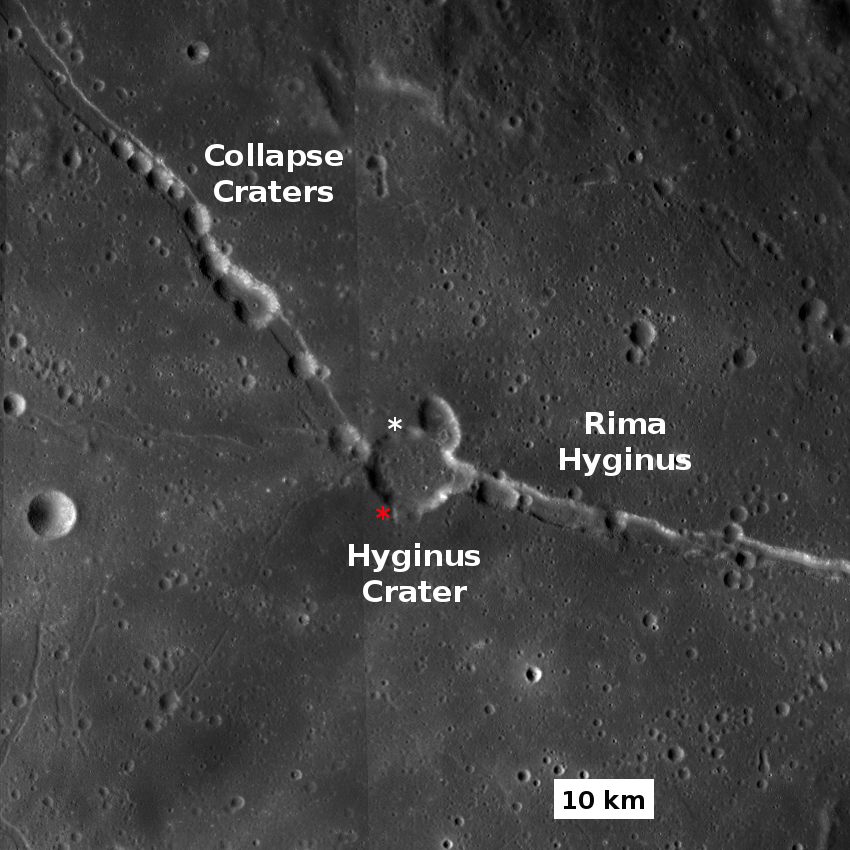
A crater on the northern rim of Hyginus crater (exact location: 7.896°N, 6.229°E, diameter of 145 m) excavated low reflectance material. Deposits of pyroclastics are located around Hyginus Crater, so the low reflectance material is most likely from a layer of pyroclastics buried beneath the lunar surface. The same eruption that emplaced the pyroclastics also likely created an empty cavity beneath the surface, which then collapsed, forming Hyginus Crater!
Another crater in the image above (located at 7.608°N, 6.221°E) found on the southern rim of Hyginus is a perfect contrast to the crater in the Featured Image. The rim of the crater is hard to see in this image, but the diameter is ~20 m. This crater is smaller, so it excavated material from a shallower depth compared to the Featured Image crater, and therefore did not sample the buried pyroclastic deposit. The rays from the crater on the southern rim are high reflectance, which is typical of immaturity rays made of fresh material, in comparison to rays made from material compositionally different from the surrounding area.
Explosive eruptions of basaltic magma form lunar pyroclastic deposits, which are associated with the eruption of the mare deposits on the near side of the Moon. In remote sensing data pyroclastic deposits appear smooth and low in reflectance. Pyroclastic deposits are valuable since measurements of pyroclastic beads returned from the Apollo missions show that the material is enriched in volatile elements such as sulfur, lead, fluorine, and zinc (compared to other more common lunar materials such as mare basalt and highland anorthosite). On the Earth all of these materials are relatively common. However, if you were living on the Moon, pyroclastic deposits are the best place to find these materials! Pyroclastics are also typically high in iron oxides and some contain titanium oxides.
Explore more of the Hyginus caldera inside and out with the full LROC NAC image.
Related Images:
Dark streaks in Diophantus crater
Alphonsus crater mantled floor fracture
You can read more about the Hyginus region in the Icarus paper, "An igneous origin for Rima Hyginus and Hyginus crater on the Moon."
Published by Sarah Braden on 14 June 2012

